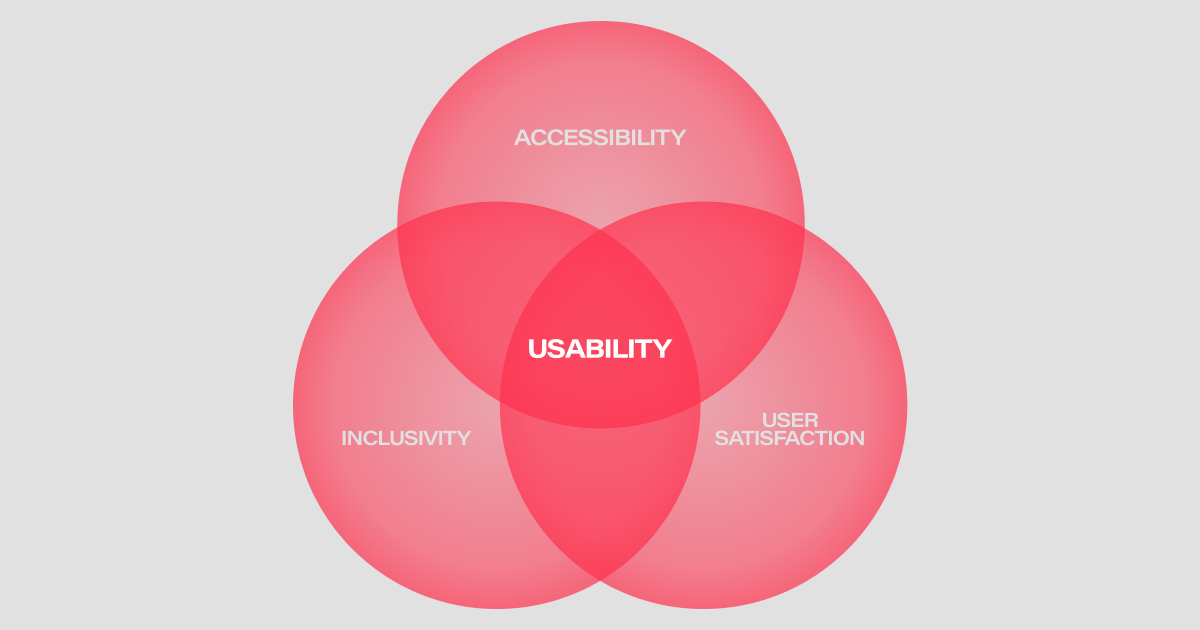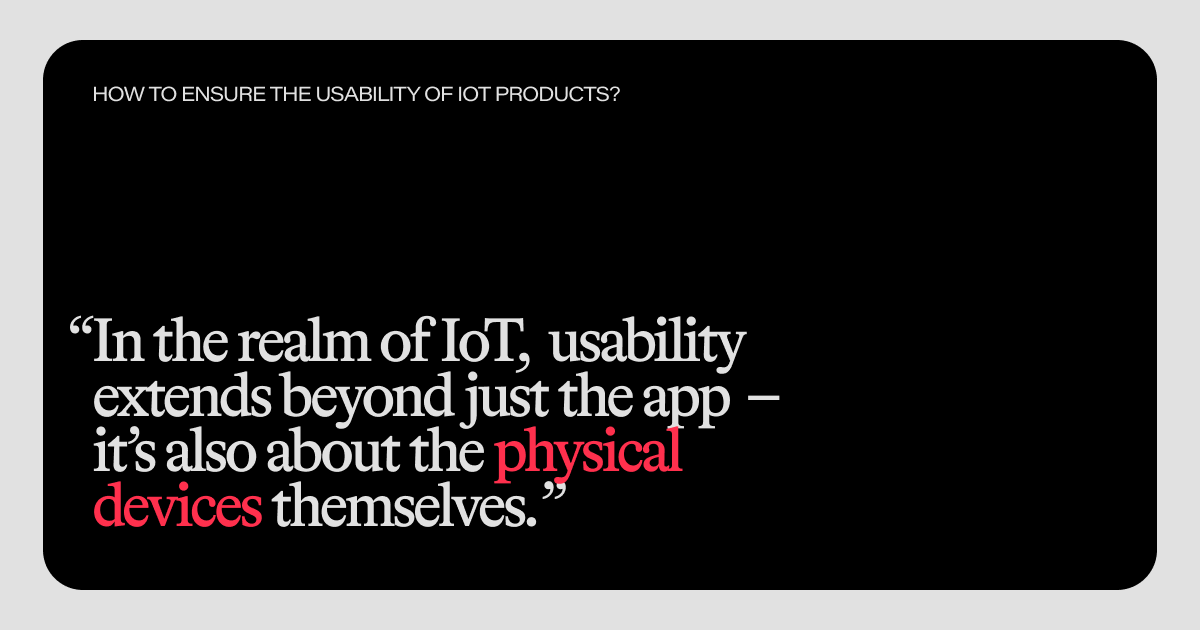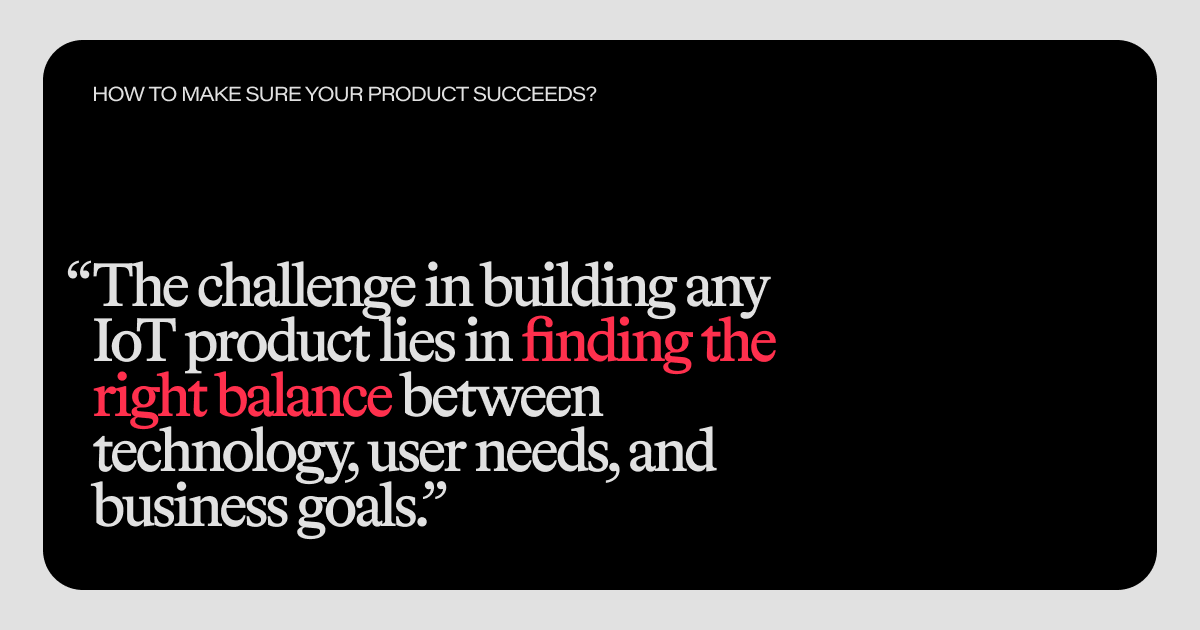Usability is a broad design term that encompasses many aspects of design. In the context of IoT, it goes beyond digital interfaces, encompassing the design and functionality of the connected devices themselves.
In this article, we’ll explore the significance of user-centered design in enhancing IoT usability, address the challenges and pitfalls that IoT companies should navigate, and explain how a focus on users brings tangible benefits to businesses. Let’s get started!
Understanding Usability in IoT
Usability, at its core, is about creating products that users can easily understand, and find beneficial. It’s a concept that extends beyond functionality, dealing with accessibility, inclusivity, and user satisfaction.

In the realm of IoT, usability extends beyond just the app – it’s also about the physical devices themselves. That means the devices’ design should consider the needs and limitations of various users, including people with disabilities, senior citizens, and children (if it is a product that they could use).
As an example, a smart speaker is meant to be used by anyone able to speak, but there were instances where the device could not understand the user because of their accent – which is strictly a usability-related issue.
It’s important to remember that IoT usability also delves into ergonomics, ensuring that devices are physically comfortable and easy to operate for all users.
User-Centered Design as a principle
User-centered design is more than just a buzzword; it is an actual methodology that places the user at the forefront of the design process. That means conducting thorough qualitative research such as interviews and user testing sessions; statistics alone won’t tell you enough about the ‘why’ behind user behavior and the needs of your customers.
A key aspect of this methodology is that it’s essentially user-driven and not business-driven. Design decisions should not prioritize business goals at the expense of user experience, and deceptive design (dark patterns) should be avoided, meaning users should not be forced to take actions they don’t want to just because it benefits the business behind the service they are trying to use.
At the very basics, user-centered design is about pinpointing and solving real problems for customers, not manipulating them into actions that benefit the business.

The Crucial Role of User Research
User research is the most important aspect of user-centered design. It provides insights at every stage of product development, from understanding the problem space to testing solutions with real users. Research ensures a nuanced understanding of user behaviors and preferences, and provides the team with real data they can use to design the product.
An example of this approach is Apple’s reevaluation of its VR headset. Through user testing, they discovered that integrating the battery within the headset made it uncomfortably heavy – by involving users in the design process, Apple opted for a removable battery pack on a cable, addressing the issue of potential discomfort.
Creating IoT products with a user-centered approach
Start with Problems, Not Solutions

IoT products are very often tech-driven. A very common scenario in the industry is for a company to have state-of-the-art tech that drives the entire project, but it then turns out the product doesn’t respond to people’s needs or solve their actual problems.
To avoid this, designers must engage with users early in the process and make an effort to understand their habits and challenges. Testing prototypes with real users helps ensure that the proposed solutions address genuine issues of the people who are supposed to use a given solution.
Balance Tech, User, and Business Aspects

The challenge in building any IoT product lies in finding the right balance between technology, user needs, and business goals. If we focus too much on one of these aspects, the project won’t be likely to succeed.
A good product must meet all the criteria: be technologically sound, meet user needs, and generate revenue. This involves understanding the cost implications, pricing the product appropriately, and ensuring it provides value without compromising quality.
Ensure Continuous User Involvement

User-centered design is not a one-time activity; it's an ongoing process. From problem identification to solution testing and post-launch feedback, maintaining a connection with users is essential.
For IoT, both the digital part and the physical one need to be created with the user in mind. That means testing the product with real people to verify if they can operate the device, if they understand what the app and the device do respectively, and if the product provides sufficient feedback.

Avoiding Design Pitfalls
Some mistakes are more common than others when it comes to designing usable IoT products. First and foremost, designers should always:
Avoid prioritizing your own perspective. The cardinal sin of design is assuming that your preferences align with the broader user base. Designers must actively seek diverse perspectives and feedback to create products that resonate with a broader audience.
Remember about all aspects of usability. Accessibility is not an afterthought but an integral part of design. Acknowledging the diverse needs of users, including varying abilities and conditions, ensures that the product is really usable for all.
Keep a balanced approach. A well-balanced product appeals to both users and business interests. It should be profitable without compromising ethics and technologically advanced without sacrificing ease of use.
Conclusion
The success of IoT products often hinges on the seamless integration of user-centered design principles. By embracing continuous user involvement and maintaining a delicate balance between technology, user needs, and business goals, IoT companies can create profitable products that enhance the lives of users.
Looking for guidance on your connected device project? Contact us!

Piotr Schmidtke
UX Expert

